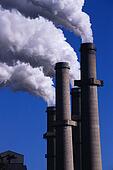THE WASHINGTON POST – By Brad Plumer
 Over the next 18 months, the Environmental Protection Agency will finalize a flurry of new rules to curb pollution from coal-fired power plants. Mercury, smog, ozone, greenhouse gases, water intake, coal ash—it’s all getting regulated. And, not surprisingly, some lawmakers are grumbling.
Over the next 18 months, the Environmental Protection Agency will finalize a flurry of new rules to curb pollution from coal-fired power plants. Mercury, smog, ozone, greenhouse gases, water intake, coal ash—it’s all getting regulated. And, not surprisingly, some lawmakers are grumbling.
Industry groups such the Edison Electric Institute, which represents investor-owned utilities, and the American Legislative Exchange Council have dubbed the coming rules “EPA’s Regulatory Train Wreck.” The regulations, they say, will cost utilities up to $129 billion and force them to retire one-fifth of coal capacity. Given that coal provides 45 percent of the country’s power, that means higher electric bills, more blackouts and fewer jobs. The doomsday scenario has alarmed Republicans in the House, who have been scrambling to block the measures. Environmental groups retort that the rules will bring sizeable public health benefits, and that industry groups have been exaggerating the costs of environmental regulations since they were first created.
So, who’s right? This month, the nonpartisan Congressional Research Service, which conducts policy research for members of Congress, has been circulating a paper that tries to calmly sort through the shouting match. Thanks to The Hill’s Andrew Restuccia, it’s now available (PDF) for all to read. And the upshot is that CRS is awfully skeptical of the “train wreck” predictions.
First, the report agrees that the new rules will likely force the closure of many coal plants between now and 2017, although it’s difficult to know precisely how many. For green groups, that’s a feature, not a bug: Many of these will be the oldest and dirtiest plants around. About 110 gigawatts, or one-third of all coal capacity in the United States, came online between 1940 and 1969. Many of these plants were grandfathered in under the Clean Air Act, and about two-thirds of them don’t have scrubbers:

